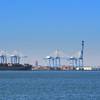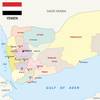Scrutiny surrounding the carriage of cargo at sea, particularly on the quality of tonnage enlisted to transport potentially hazardous materials, is higher than ever. In the wake of high-profile disasters such as Erika, which left not only beaches and water but the reputation of many in the shipping industry soiled, leading companies usually step up.
This is the case with the American Bureau of Shipping, one of the handful of highly regarded classification societies in the world. At the recent Posidonia exhibition, ABS introduced SafeShip, a program designed to apply advanced technology to reduce risk in the design, construction and maintenance of a new and safer generation of cost-efficient vessels.
"The recent high profile Erika and Leader L casualties have clearly identified a need within the industry for better tools to gather and interpret data critical for maintaining the structural integrity and minimizing the risk of structural failure of a vessel throughout its service life," said Frank J. Iarossi, chairman and CEO of ABS.
ABS SafeShip is designed to not only provides a method of collecting this information, starting with the initial design and drawings, but also of applying the most advanced, dynamic based assessment of the hull structure at any time throughout the vessel's life.
"The central elements within ABS SafeShip had been developed to improve the manner in which ABS assessed and recorded the structural condition of ABS classed vessels. With ABS SafeShip we are giving the owner, at no cost, the most complete set of tools available that can be used to plan and implement a through-life structural integrity management program," Iarossi said. "SafeShip is not a product but rather a specific approach to vessel design, construction and maintenance that will promote a safety culture for the ship, for the owner and ultimately within the industry." Free enrollment in the ABS SafeShip program is open to all new and existing vessels designed to meet ABS SafeHull criteria.
How It Works
Enrollment in the ABS SafeShip program begins when a vessel is ordered to ABS SafeHull criteria. SafeShip then takes the engineering first principles approach from SafeHull and builds a complete through-life integrity management system. Once SafeHull identifies the more highly stressed areas, the new ABS Guide for Enhanced Hull Construction Monitoring establishes specific criteria for both tolerances and inspections of these areas during construction to avoid subsequent structural problems in operation. On delivery, a structural database is created utilizing ABS SafeNet Hull Maintenance. Specified as-built drawings are entered into the ABS SafeNet Vessel Drawings system, providing life cycle storage and easy updating of this crucial information. In service, ABS SafeNet Hull Maintenance and Survey Status modules are used to manage the structural condition of the vessel. These allow an owner to monitor and predict the condition and capability of a ship as it ages in a more complete and accurate manner than previously possible.
"As the vessel ages, by using ABS SafeShip the owner will have the tools to rationally predict fatigue sensitive areas, to accurately assess the condition of the vessel, and to predict its future service life," said Robert D. Somerville, ABS president and COO. "An owner can expect to see significant cost savings over the life of the vessel from improved performance, less down time, greater operating efficiencies and reduced exposure to risk. Owners of vessels enrolled in the ABS SafeShip program can be secure in the knowledge that they have exercised the highest possible level of due diligence in the design, construction and structural maintenance of their vessel."
ABS will electronically scan and store the specified vessel drawings for the owner at no charge. The classification society will also electronically input the as-built structural description of the vessel, including the identification of the more highly stressed areas extracted from ABS SafeHull, into the program, also at no charge to the owner. The requisite operating programs will be installed on the owner's computer, together with appropriate training, by the ABS affiliate, ABS Nautical Systems at no cost to the owner.
RINA Sets New Green Standards
Italian classification society RINA — under the gun of late due to its role in the Erika oil spill disaster — has launched Green Star, a new environmental standard for shipping, and the 82,000 gt Costa Atlantica, due for delivery from Kvaerner Masa yard at the end of June, will be the first ship to meet the green standard. "Passengers want to visit environmentally sensitive areas, but they don't want to damage them," says Franco Porcellacchia, international marine manager of RINA. "The Green Star standard is visible proof that their ship is designed and operated to protect the environment, and keep the sea and air clean." The Green Star logo has been awarded to the Costa Atlantica as evidence that the ship meets the requirements of two voluntary RINA class notations, CLEAN SEA and CLEAN AIR. Carnival Corporation has already applied for the first of three sister ships building at Kvaerner Masa, the Carnival Spirit, to be certified to the new standard. A leading feature of the CLEAN SEA notation is that bunker tanks must be installed over double bottoms, to prevent accidental discharge of oil in a low speed accident. Ships must also be fitted with holding tanks for all black and gray water waste, to prevent organic pollution, and must meet the standards set down in the voluntary IMO MARPOL Annex IV. Special requirements ensure garbage is disposed of safely, and ships must not use TBT-based anti-foulings.
The CLEAN AIR notation sets limits on SOx and NOx emissions from the engines, and requires compliance with the voluntary standards of Annex VI to Marpol. There is a three percent limit on sulfur content in fuel that can be burnt. RINA also sets requirements for refrigeration gases and their containment in the case of an accident, and sets controls for incineration plants. "Costa Crociere and Carnival Corporation know that these new ships meet the requirements of Annex IV and VI to Marpol now," says Porcellacchia. "They don't face expensive retrofits, and they can plan itineraries to areas where any form of waste disposal is prohibited. We believe these standards offer shipowners and their clients the best possible protection for the environment, combined with a practical approach to dealing with wastes and the energy needs of a passenger ship." RINA is currently overseeing the construction of four ultra-large cruise ships for Carnival Corporation at Kvaerner Masa yards, and seven large cruise vessels for Holland America, Carnival and Princess Cruises at Fincantieri yards.
Featured videos

Inmarsat Enhances Service to Drive Digitalization

Inside the Electrified Truckable Tug

Tracking Foreign Vessels Working in the U.S. Jones Act Market
Subscribe for
Maritime Reporter E-News
Maritime Reporter E-News is the maritime industry's largest circulation and most authoritative ENews Service, delivered to your Email five times per week









